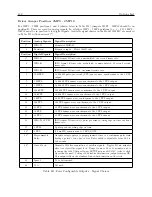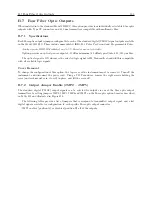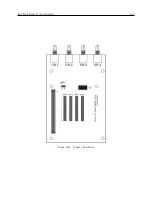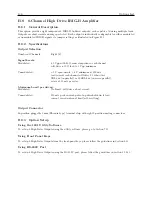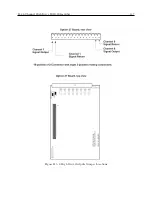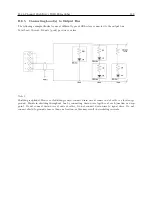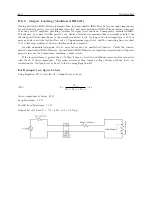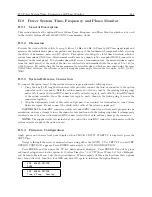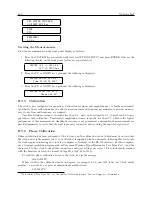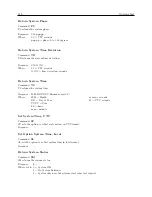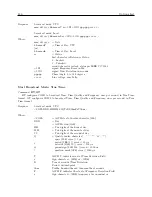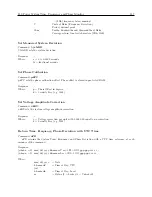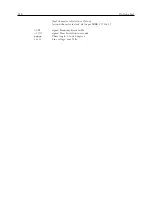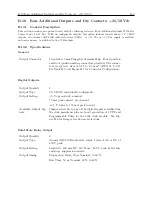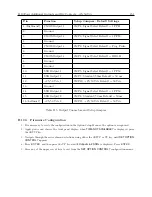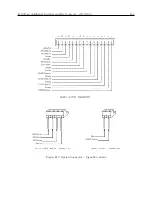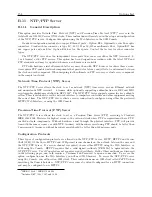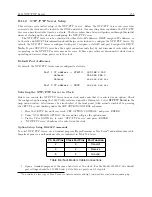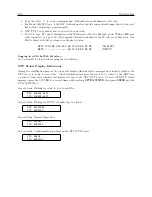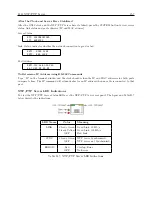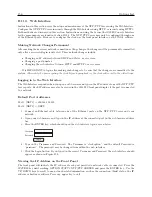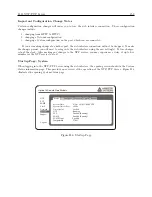
146
Options List
Response:
broadcast mode, UTC:
mm/dd/yyyy hh:mm:ssU ss +f.fff +t.tttt ppp.ppp vvv.vv
C
broadcast mode, Local:
mm/dd/yyyy hh:mm:ssL ss +f.fff +t.tttt ppp.ppp vvv.vv
C
Where:
mm/dd/yyyy
= Date
hh:mm:ssU
= Time of Day, UTC
(or)
hh:mm:ssL
= Time of Day, Local
ss
= Status
first character is Reference Status:
0 : Locked;
1 : Unlocked;
second character is clock status per IEEE C37.118.1
+f.fff
signed Frequency Error in Hz.
+t.tttt
signed Time Deviation in seconds.
ppp.pp
Phase Angle, 0 to 360 degrees.
vvv.vv
Line voltage, rms Volts.
Start Broadcast Mode: True Time
Command:
BT, OT
BT configures COM1 to broadcast Time, Time Quality and Frequency, once per second, in True Time
format. OT configures COM2 to broadcast Time, Time Quality and Frequency, once per second, in True
Time format.
Response:
broadcast mode, UTC:
<
SOH
>
DDD:HH:MM:SSQTsDS.thmFsU.thm
C
Where:
<
SOH
>
= ASCII start of header character (01h)
DDD
= Day
:
= ASCII colon (3Ah)
HH
= Two digits of the hour of day
MM
= Two digits of the minute of day
SS
= Two digits of the second of day
Q
= Quality Sentry character ( , “.”, “*”, “#”, “?”)
space (20h) error
5
1
µ
s
.
period (2Eh) 1
5
error
<
10
µ
s
*
asterisk (2Ah) 10
5
error
<
100
µ
s
#
pound sign (23h) 100
5
error
<
1000
µ
s
?
question mark (3Fh) error
=
1000
µ
s
T
ASCII T, indicates start of Time Deviation Field
s
Sign cha (2Bh) or - (2Dh)
D
Tens of seconds (Time Deviation
.
Period, decimal point
thm
Tenths, hundredths and thousandths of seconds
F
ASCII F, indicates the start of Frequency Deviation Field
s
Sign cha (2Bh) frequency above nominal or
Summary of Contents for 1201B
Page 4: ...iv ...
Page 153: ...B 7 Four Fiber Optic Outputs 135 Figure B 4 Jumper Locations ...

